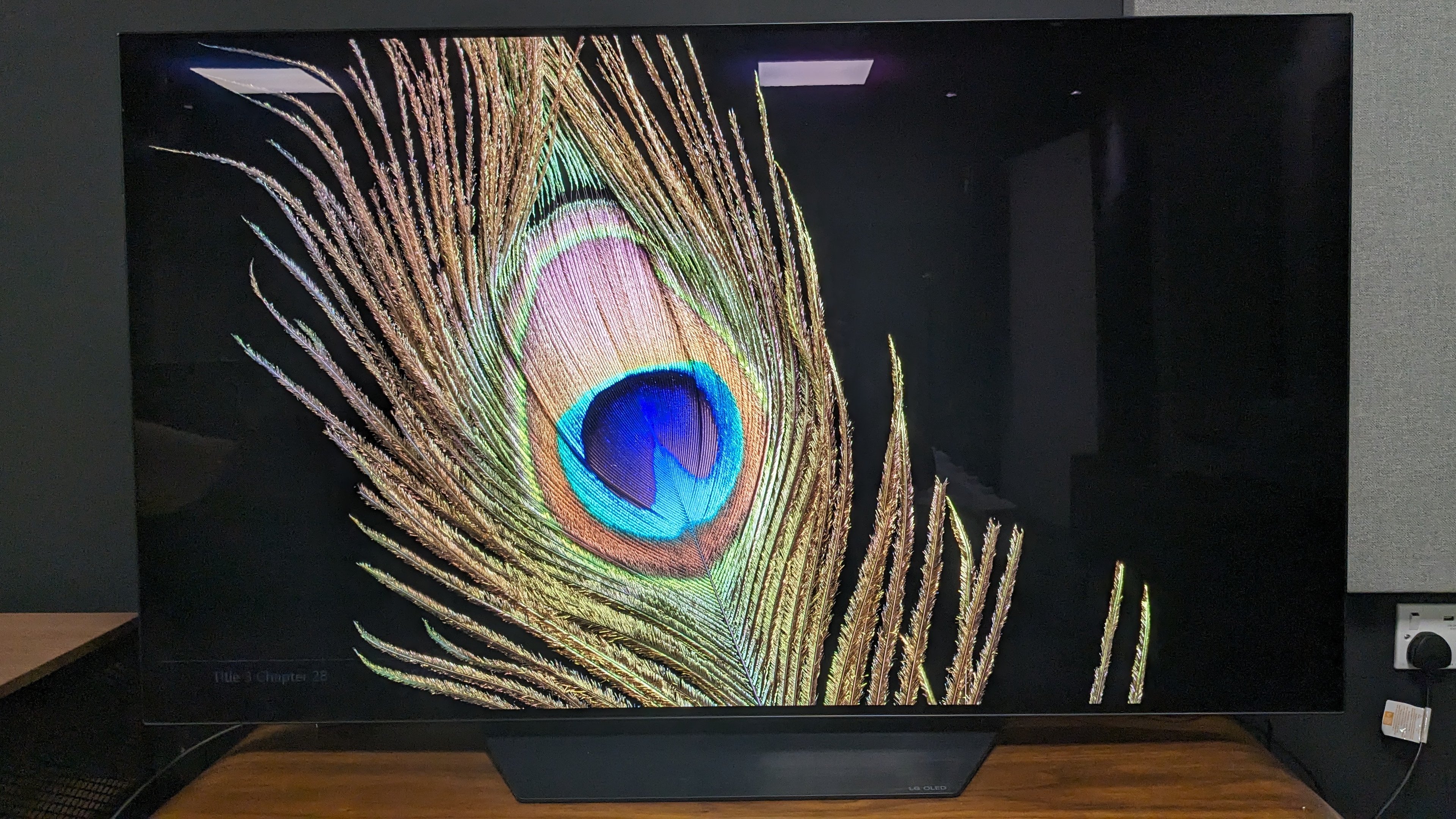
We’ve all been there – settling down to watch a movie and you suddenly see your reflection on your TV’s screen. Whether it’s the light from a lamp at night or from the sun creeping in through windows during the day, reflections seem unavoidable on a lot of TVs.
Some of the best TVs now, though, are taking steps to limit these reflections even in the brightest daylight viewing conditions using different technologies. These technologies, which include mini-LED and Micro Lens Array (MLA), are being integrated into the latest TVs, and the good news is that you don’t always have to pay a premium for them.
Although it may seem like there is only one type of reflection – seeing a mirror image of yourself or an object – there are different reflection types. I’ll detail these below, then discuss which new TVs successfully combat reflections, as well as strategies to limit them on your existing TV.
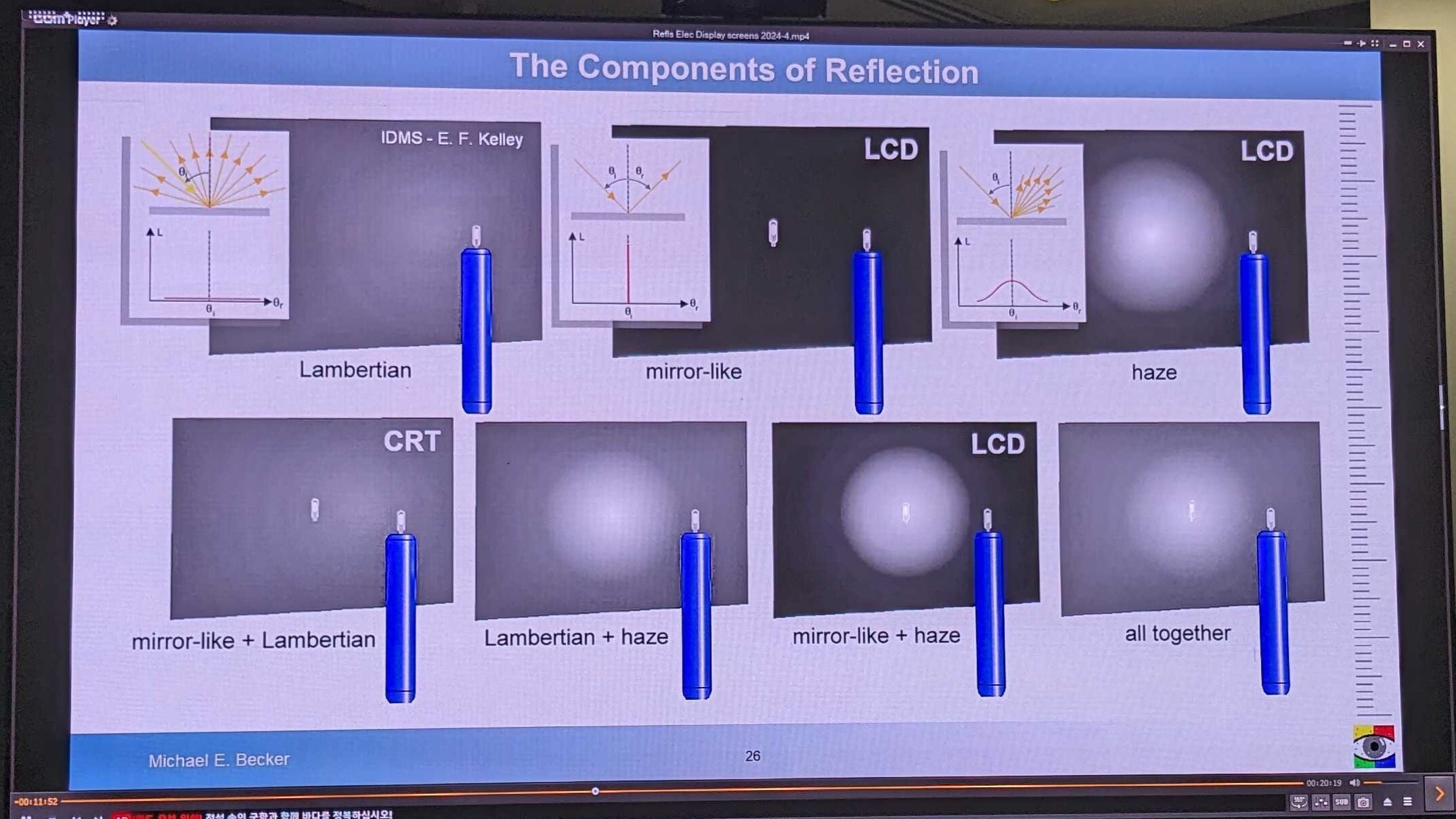
The 3 key reflection types
When thinking about how to limit reflections, it’s first important to know what types of reflections we’re dealing with. At a recent LG event, I and other TV reviewers were shown a video from display expert and scientist Professor Michael E. Becker PhD in which he categorized three major reflection types: mirror-like, haze, and Lambertian.
Mirror-like refers to the most common type: direct reflections on a screen created by light sources. A diagram from The University of Waikato Te Whare Wānanga o Waikato (shown below) demonstrates how mirror-like works, with the light bouncing back off a glossy LCD screen in one direction, which is why we see objects, our reflection and in-room light sources on the screen.
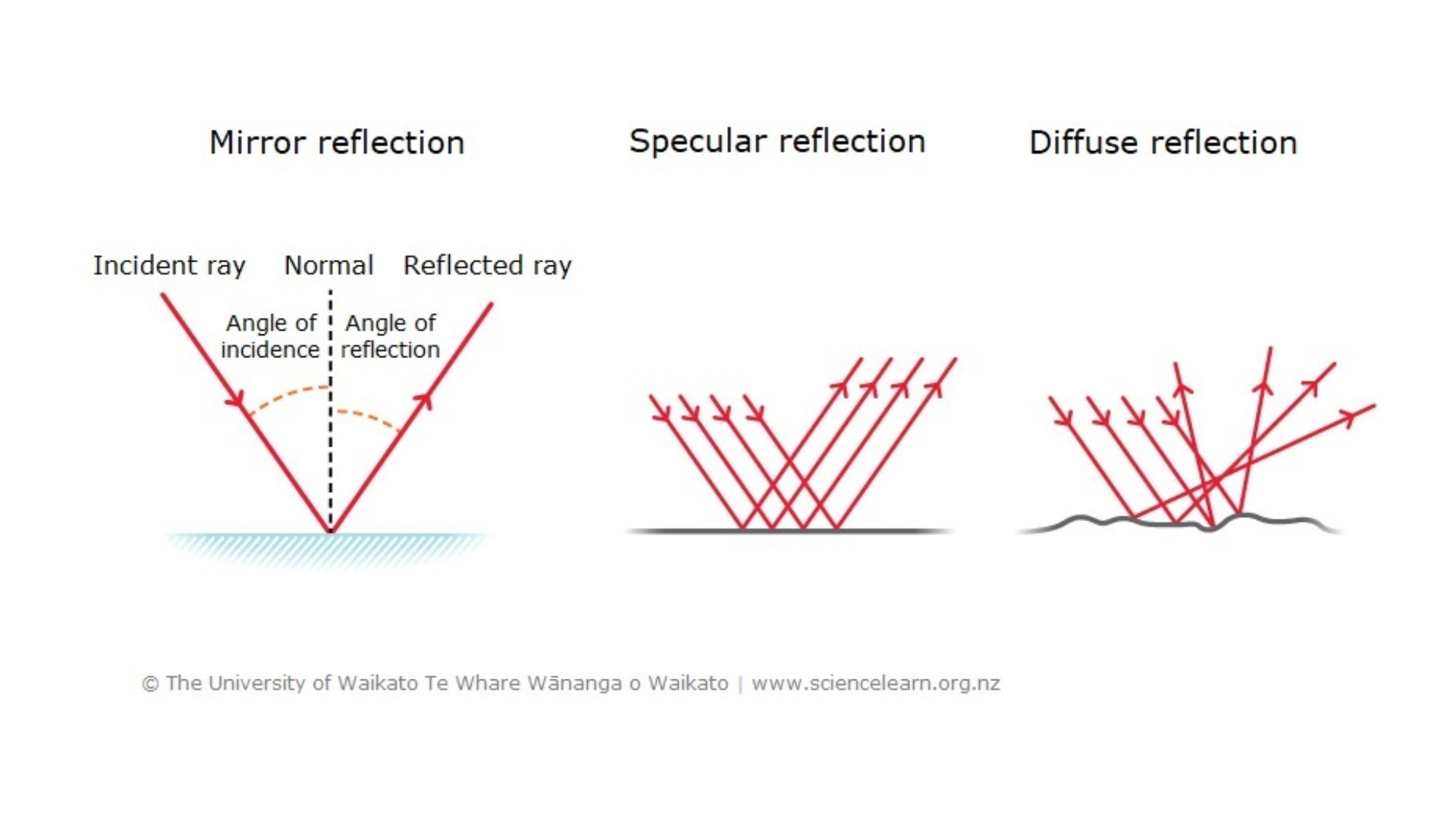
Haze reflections are not as direct, with the light reflecting in all directions. As you can see from the diagram below, haze reflections resemble diffuse reflections, and result from light hitting matte or anti-glare screen coatings, which are becoming more common on TVs (more on that below). Light is still reflected, but objects are less obvious, resulting in a more optimal viewing experience.
The third type is Lambertian reflection. This is reminiscent of haze reflections but takes things one step further by evenly distributing reflected light on the screen. A characteristic of Lambertian reflection is that light reflections will look the same no matter what angle you view from.
How are new TVs beating reflections?
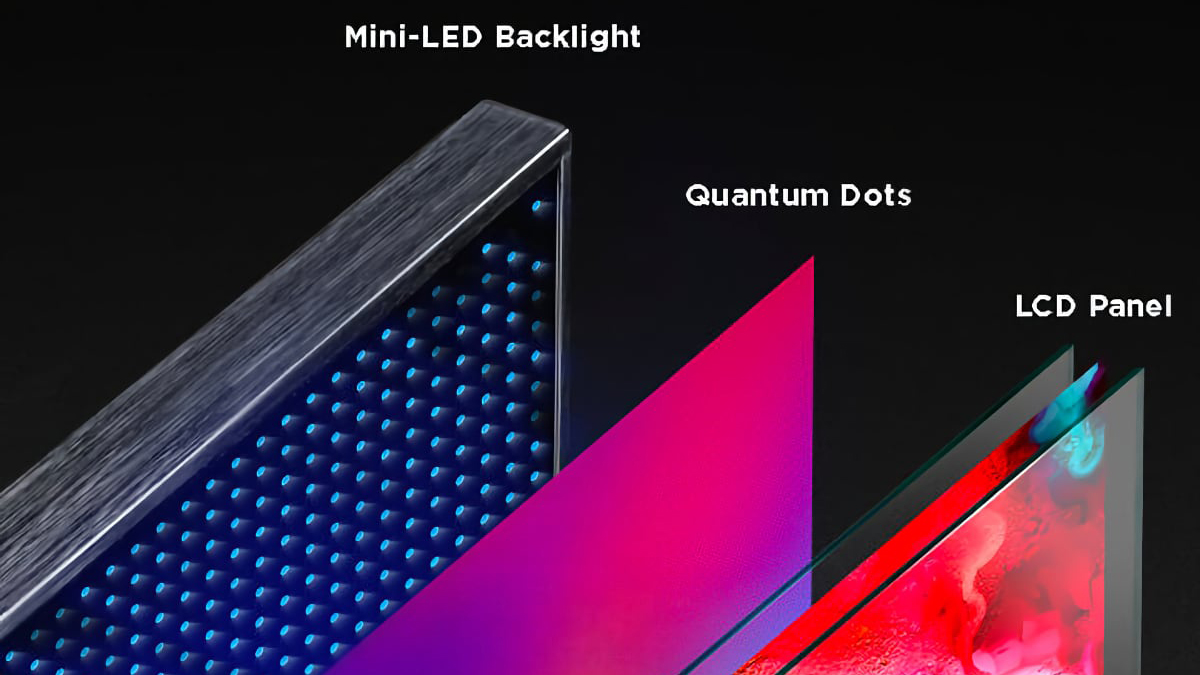
As mentioned above, TVs are now using several technologies to beat reflections. The first is mini-LED. This allows for substantially more LED lamp modules to be packed in an LCD TV backlight than on a conventional set, resulting in higher brightness, better lighting control and better contrast. The best mini-LED TVs on offer include the Samsung QN90C, Hisense U8K and the TCL QM8, all of which have a peak brightness of over 1,500 nits (with the TCL QM8 reaching a staggering 2,321 nits).
When it comes to how we test brightness, full-screen brightness is an important indicator of how the TV will handle reflections. The three sets mentioned above all hit over 600 nits full-screen brightness. That's substantially higher than OLED TVs and conventional LED TVs, which hit roughly 150-350 nits (there are exceptions, but this is an estimate based on TVs we’ve tested). Mini-LED's ability to display bright, sustained full-screen images reduces mirror-like reflections, making it one of the best TV technologies for harsher lighting conditions.
One issue with some of the best OLED TVs in recent years has been low brightness. OLED TVs use self-emitting pixels rather than a conventional LED backlight, which results in incredible black levels and stunning contrast. But because conventional OLED panels, called W-OLED, have comparatively low brightness, reflections are common.
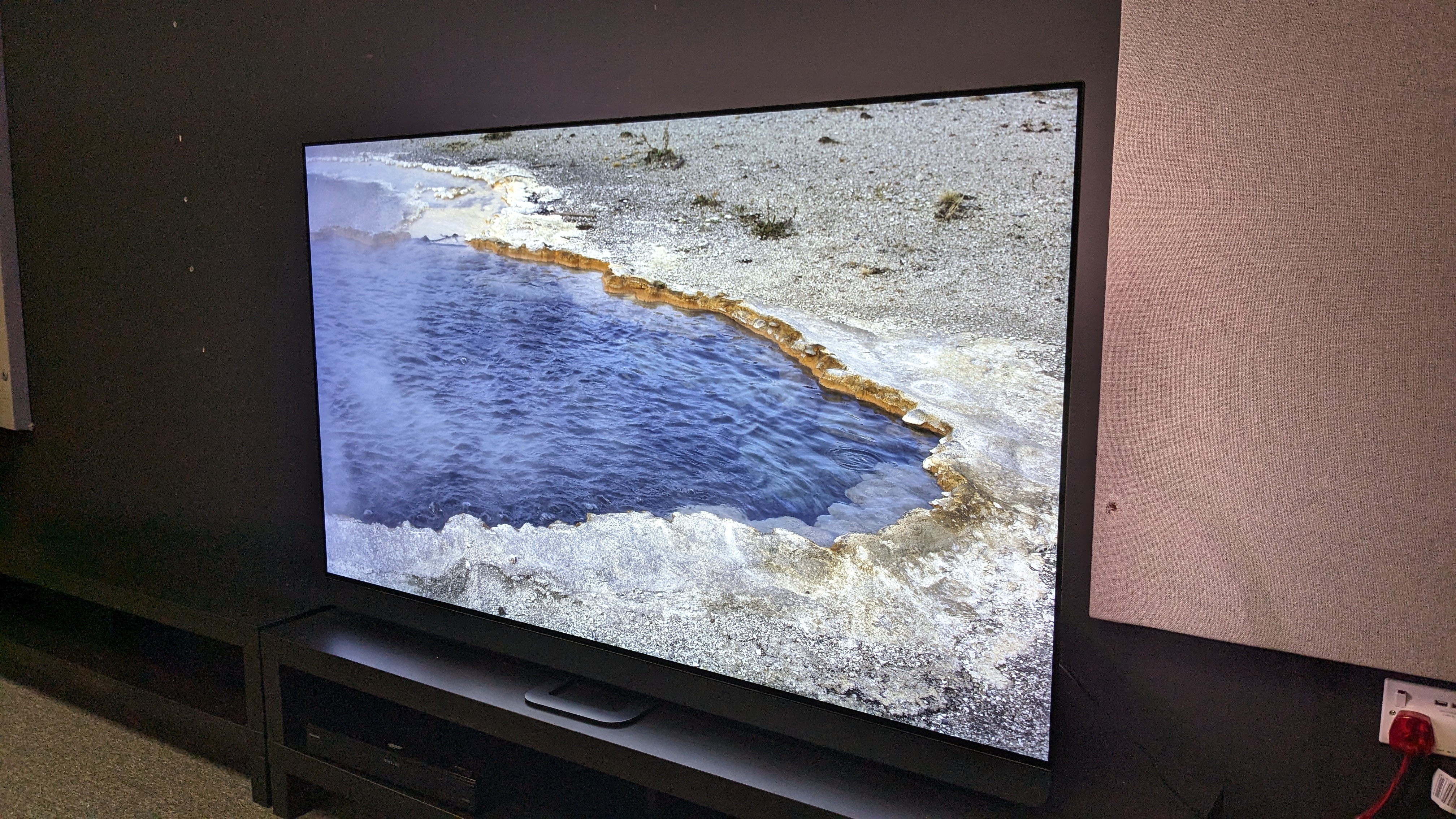
However, several new OLED models, such as the LG G3 and upcoming LG G4, Philips OLED908, and Panasonic MZ2000 use a technology called MLA that, simply put, is a type of lens that can be added to an OLED panel to increase brightness. To give an idea of how it gets implemented, 5,000 microscopic lenses can be added to a single OLED pixel. Yes, one OLED pixel. That means for a 77-inch OLED TV there would be 42.4 billion lenses in total. Compared with conventional W-OLED screens, which average 600 nits, and OLED EX panels, which are brighter but still only average 800 nits, we’ve measured up to 1,480 nits on MLA-equipped OLEDs. This massive brightness increase may not result in a total elimination of reflections, but it strongly reduces them. MLA could ultimately be the savior of W-OLED screens.
Back in early 2023, Philips demonstrated a further innovation to reduce screen reflections, a polarizer called ‘Vanta Black’. At that demo, we saw mirror-like reflections dramatically reduced by the polarizer. Later, when we viewed the OLED908 in intentionally harsh lighting conditions in our lab, only minimal reflections could be seen.
Other TV brands such as Samsung have introduced matte screens. This feature can be found on Samsung’s The Frame TVs and its upcoming S95D flagship QD-OLED model. Having seen the Samsung S95D in person, it’s clear that this method works. Haze reflections are visible on the S95D, but the matte screen creates diffuse reflections as discussed above and almost fully eliminates more frustrating mirror-like reflections. The result resembles the more ideal Lambertian reflections, meaning the S95D could be the best OLED TV option for bright rooms.
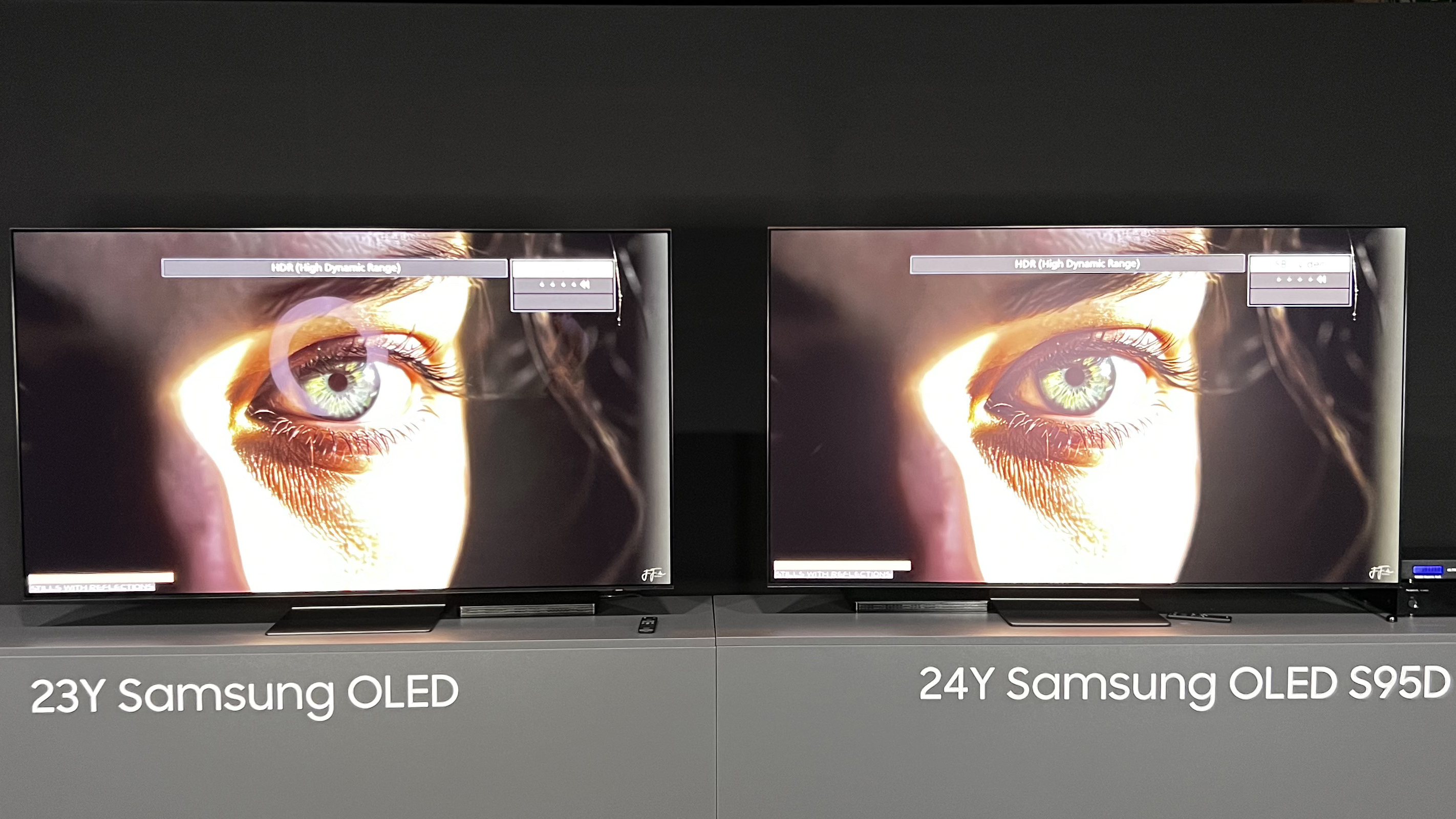
What can you do to reduce reflections on your current TV?
Now, it’s all well and good to tell you about these wonderful new TVs with screens that can drastically reduce reflections and stop pesky sunlight from ruining your football match. But what if you aren’t planning to buy a new TV? Fear not, because we have tips on how to reduce screen reflections at home.
The first is obvious: watch in the dark or with dimmed lighting. Wait until the evening to watch your favorite movies, as a dark or dimmed room will eliminate reflections and provide the full benefits of enhanced contrast and black levels.
Next, if your main light source is a lamp, can you move it? Glossy TV screens reflect light at an angle, so moving this light source will change the angle and the level of reflection.
Another way to reduce reflections is by ‘diffusing’ light from a lamp using a dark-colored shade or even angling it so the bulb is concealed. As for natural light coming from windows, invest in dark or ‘black-out’ curtains to block it.
It’s also worth considering the wall opposite the TV. A white or brightly colored wall will likely appear as a reflection, so painting it darker could reduce the negative effect.
In a lot of these situations, you may not fully eliminate reflections. But if any of these measures can transform more obvious mirror-like reflections into haze or Lambertian ones, they will almost certainly have a positive impact on your viewing experience.







